#18th c. persia
Explore tagged Tumblr posts
Text
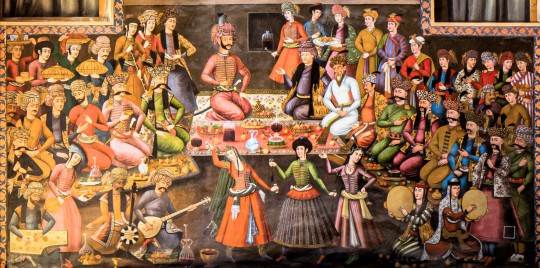
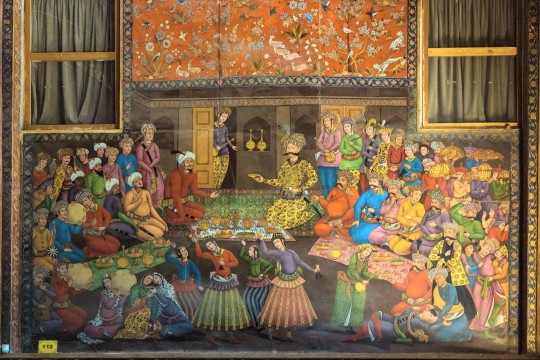
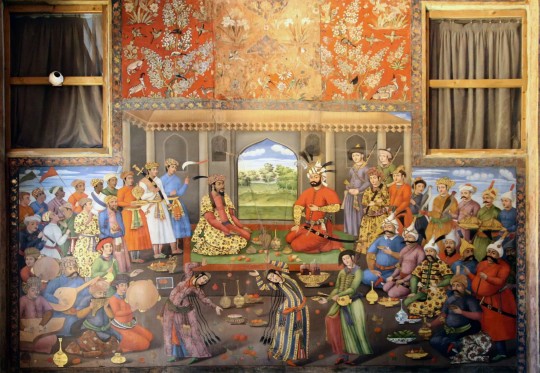
Wall paintings from Chehel Sotoun Palace; Safavid dynasty Iran, 18th century
"Shah Abbas II’s reception feast in honor of Nader Mohammad Khan, King of Turkestan"
"Abbas the Great and Uzbek ruler Vali Muhammad Khan"
"Shah Tahmasb I receiving King Homayun of India"
45 notes
·
View notes
Text

THE SHAHNAMAH [aka THE PERSIAN BOOK OF KINGS] by Abū al-Qāsim Firdawsī. [Persia, c.1000] printed in India c.1600. [Cover is early 20th century]
The book is composed of 62 separate stories set in 50,000 rhyming couplets and divided into 990 chapters. It recounts the mythological history of ancient Persia and tales of the famous heroes and personalities of Iranian history, from legendary times to the 7th-century reign of Yazdegerd III, the last king of the Sassanid dynasty. The book was widely read throughout the Persian-speaking world. This manuscript copy was made in India in the 17th or 18th century. The text is written in nastaʻliq script in four columns of 25 lines.
The SHAHNAMAH occupies a cultural space something like ‘The Illiad” and “The Odyssey” do in the western tradition, or “Mahabharata” in India — the cornerstone of an entire body of language and literature.
‘It was 33 years in the making. “Epic” doesn’t begin to cover it. …
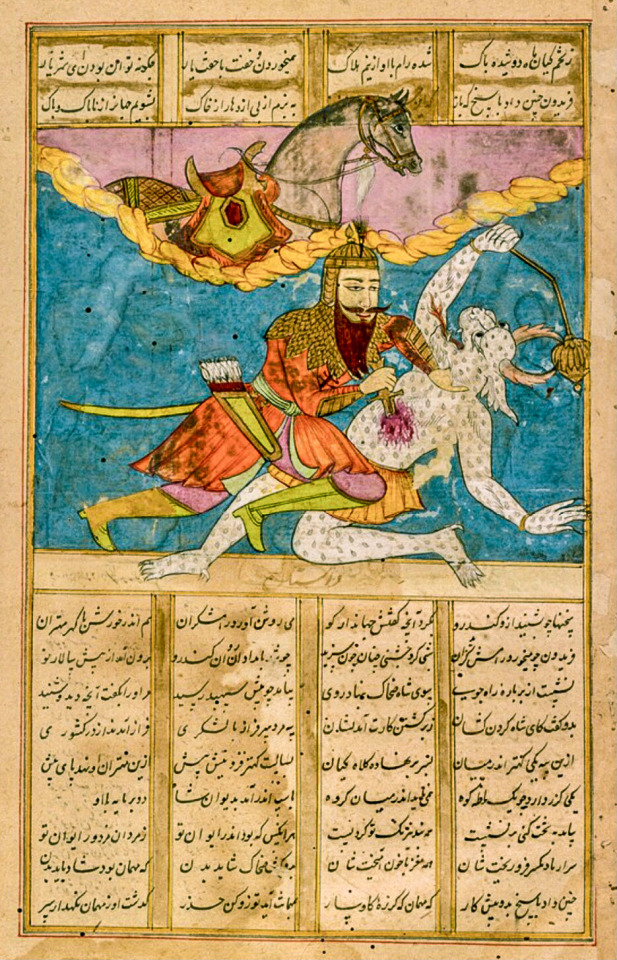
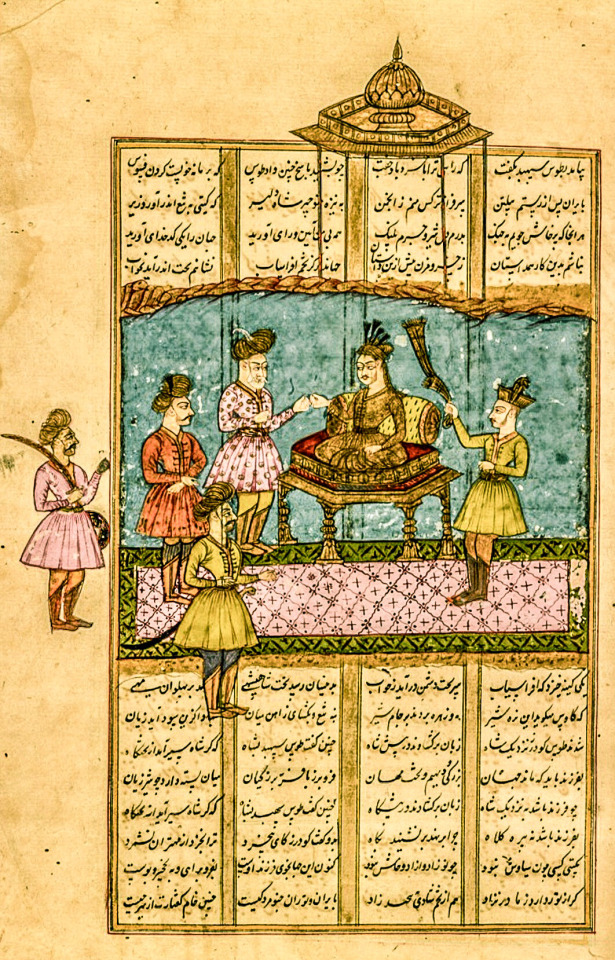

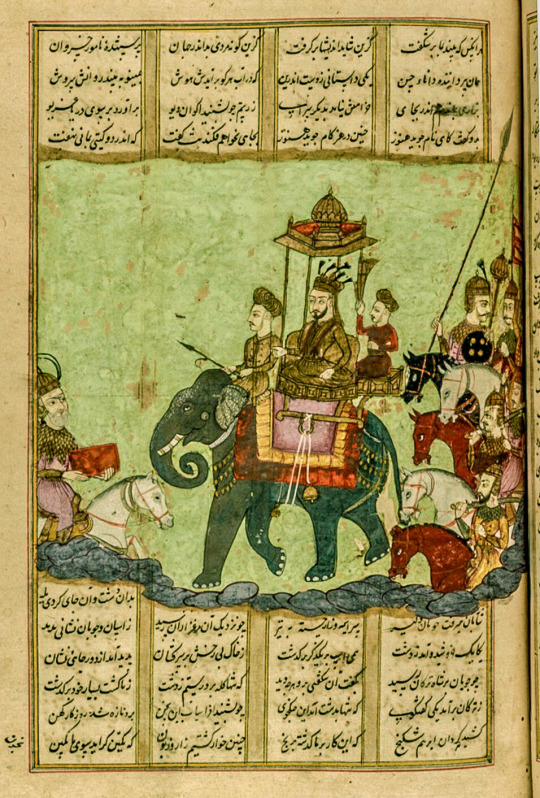
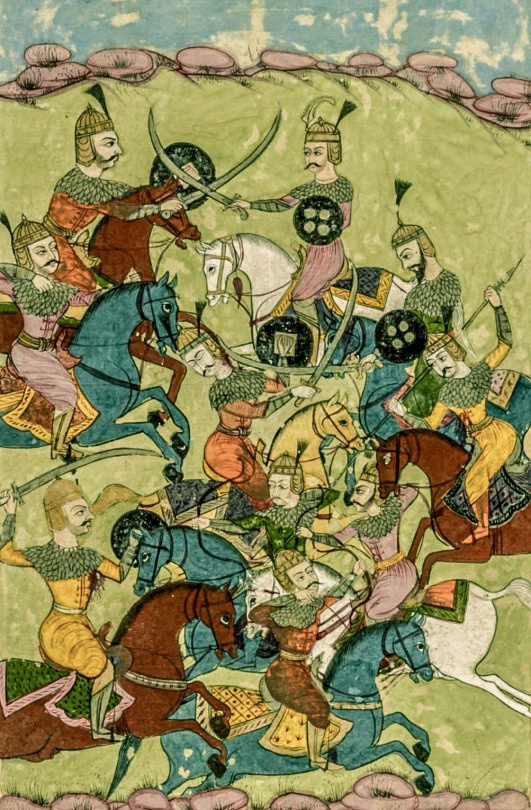
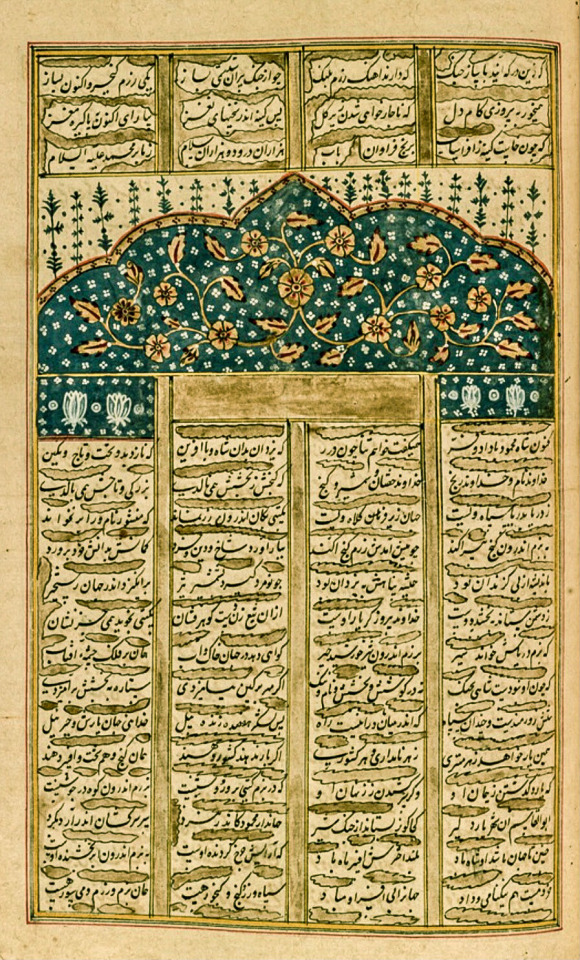



source [The Library of Congress]
#beautiful books#book blog#books books books#book cover#books#illustrated book#old books#incunabula#mythology and folklore#ancient persia
72 notes
·
View notes
Text
Three Wise Men Following a Star ✨

The Three Magi (Three Kings) Byzantine mosaic (c.565 ) In Italy 🇮🇹 the Basilica of Sant’Apollinare Nuovo in Ravenna, the magi and their gifts are rendered in a stunning mosaic from the early 6th century (restored 18th century)
Many Christmas carols make mention of the three kings, who follow a star and come to pay homage to the baby Jesus in Bethlehem. In the Bible, they are not called kings, and their number is not specified—instead they are “wise men from the East.” At many courts in the east, including ancient Babylon and Persia, learned astrologers often served as priestly advisers, practiced in the art of magic. In the centuries since, the three magi have been interpreted as kings.
According to the Book of Matthew, a bright star led the magi from the east until it stopped “over the place where the child was,” and “upon entering the house, they saw the child with Mary his mother” (Matthew 1:24).
Through the centuries, paintings have shown as many as eight kings. The Western tradition of three kings most likely arose from three gifts of gold, frankincense, and myrrh that they brought to the 'newborn King.

Vittorio Zecchin (1878 - 1947) - Re Magi——-Impressionist & Modern Art | Paris | 2020 | Sotheby's. Exhibited - in Venice, XVIII Esposizione internazionale d'arte di Venezia, 1932 (probably) Venice, Museo Correr.
Popular depictions of Christmas seem to compress the nativity story, making it appear as though the three kings’ show up in Bethlehem on Christmas, but traditional celebrations put their visit 12 days after Christmas.
Called Epiphany, or Three Kings Day, it is the official commemoration of the arrival of the Magi and is one of Christianity’s oldest holidays. Roman Catholics celebrate Epiphany on January 6, and Orthodox Christian faiths celebrate on January 19.
That’s why I am greeting people who celebrate whatever you're doing today with Happy Kings' Day! 💫
#TheThreeMagi #ThreeKings #Byzantinemosaic #BasilicaofSant’ApollinareNuovo #Ravenna #Italy #mosaic #6thcentury #Epiphany #art #tradition
Posted 6th January 2025
6 notes
·
View notes
Text
Saints&Reading: Thursday, May 25, 203
may 25_may 12
The Ascension of the Lord

Troparion, Tone IV
Thou didst ascend into glory, O Christ our God, having gladdened Thy disciples by the promise of the Holy Spirit. And this blessing convinced them that Thou art the Son of God, the Redeemer of the world.
Kontakion, Tone VI
Having accomplished for us Thy mission and united things on earth with things in heaven, Thou didst ascend into glory, O Christ, our God, being nowhere separated from those who love Thee, but remaining ever present with us and calling: I am with you and no one is against you.
HOLY GEORGIAN MARTYRS OF PERSIA (17th-18th c.)
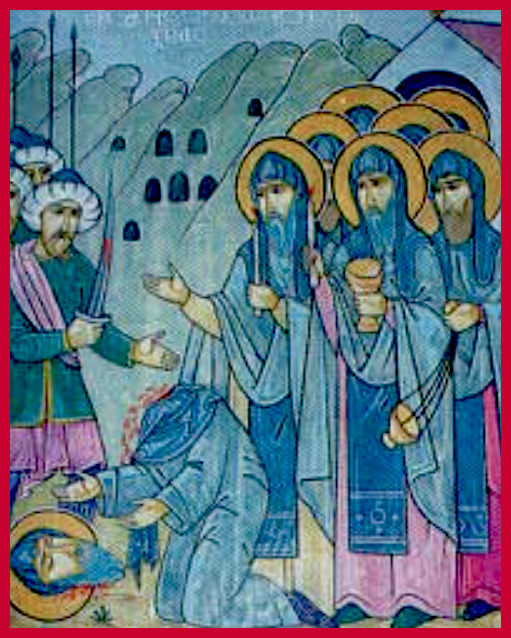
Throughout history, Georgia has frequently been forced to defend what St. Ilia the Righteous called its “threefold treasure”— language, fatherland, and Faith. In this regard, the events of the 17th century are some of the most tragic in all of Georgian history. In 1616 the bloodthirsty Persian ruler Shah Abbas I invaded Georgia with a massive army. His goal was to level the country altogether, leaving no building standing. The Shah’s army kidnapped hundreds of thousands of Kakhetian Georgians and then sent them to Persia to be sold as slaves. They settled Turkmen in the newly depopulated Georgian regions. In collaboration with the Shah, many Lezgin peoples from the mountainous North Caucasus moved south to occupy the homes of the exiled Georgians. The 17th-century Italian traveler Pietro della Valle described the Georgian exile in Persia: “It would be too long to narrate all that has passed in this miserable migration, how many murders, how many deaths caused by privation, how many seductions, rapes, and acts of violence, how many children drowned by their own parents or cast into rivers through despair, some snatched by force from their mother’s breasts because they seemed too weak to live and thrown down by the wayside and abandoned there to be food for wild beasts or trampled underfoot by the horses and camels of the army, which marched for a whole day on top of dead bodies; how many sons separated from their fathers, wives from their husbands, sisters from their brothers, and carried off to distant countries without hope of ever meeting again. Throughout the camp, men and women were sold on this occasion much cheaper than beasts because of the great number of them.” (Quoted in David Marshall Lang, Lives and Legends of the Georgian Church (London: George Allen & Unwin Ltd., 1956), p. 170.) The Georgian exiles in Persia included a large number of clergy. Many celebrated the divine services secretly and inspired the people to remain faithful to God. Those discovered were punished severely. Many Georgians were martyred for the Christian Faith during the Persian exile. Not only Georgian researchers, historians, and travelers of other nationalities attest to this truth. Furthermore, ethnic Georgians residing in formerly Persian territories continue commemorating their fallen ancestors. They make pilgrimages to the sites where their ancestors were martyred and prepare feasts to honor their memory. One of these sites is called “Ascension.” Of language, fatherland, and Faith, only language remains alive among Georgians in the formerly Persian territories. Most have lost touch with both their homeland and the Christian Faith. Those fortunate enough to be able to return to Georgia often convert to Orthodox Christianity. In 2001, when Catholicos-Patriarch Ilia II visited the ethnic Georgians in Iran, he presented them with a mound of Georgian soil. With great emotion, the Georgians scattered the ground over where their ancestors were martyred. On September 18, 2003, the Holy Synod of the Georgian Orthodox Church prayerfully considered the martyric contest of the Georgians in Persia. The Synod declared all those martyred at the hands of Muslims in the 17th and 18th centuries worthy of being numbered among the saints. Their commemoration day was set on the feast of Holy Ascension in honor of the place where many of them were martyred.
© 2006 St. Herman of Alaska Brotherhood.
VENERABLE DIONYSIUS ARCHIMANDRITE OF SAINT SERGIUS MONASTERY (Radonezh_1633)

Saint Dionysius of Radonezh, in the world David Zobninovsky, was born about 1570 in the city of Rzhev. A novice and then head of the Staritsky Dormition monastery during the Time of Troubles he was the foremost helper of Saint Hermogenes, Patriarch of Moscow.
From 1611, Saint Dionysius was the archimandrite of the Trinity-Sergiev Lavra. Under his administration, a house and hospice for the injured and those left homeless during the Polish-Lithuanian incursion was opened near the monastery. During a famine, he told the brethren of the Lavra to eat oat bread and water, leaving the wheat and the rye bread for the sick. In 1611-1612, he and the steward of the Trinity-Sergiev monastery, the monk Abraham Palitsyn (+ 1625), wrote letters asking the people of Nizhni-Novgorod and other cities to send fighting men and money to liberate Moscow from the Poles. He also wrote to Prince Demetrius Pozharsky and to all the military people, urging them to hasten the campaign for Moscow.
His monastic training helped Saint Dionysius maintain his inner light undiminished during the terrible years of this evil time. The saint achieved a high degree of spiritual pefection through unceasing prayer, which gave him the gift of working miracles. He carefully concealed his spiritual life from others, who might suffer harm from a superficial knowledge of it.
“Do not ask a monk about things concerning his monastic life,” said Saint Dionysius, “since for us monks, it is a great misfortune to reveal such secrets to laymen. It is written that what is done in secret should not be known, even by your own left hand. We must hide so that what we do remains unknown, lest the devil leads us into negligence and indolence.”
We can only measure his spiritual development and the knowledge of God, which he attained by those things which became apparent when circumstances compelled Saint Dionysius to take an active part in the world around him.
One such circumstance was his involvement in the revision of the service books. In 1616 Saint Dionysius spoke of work on correction of the Book of Needs by comparing it with the ancient Slavonic manuscripts and various Greek editions.
During their work, investigators discovered discrepancies in other books edited in the period between patriarchs (1612-1619). People did not understand what the editors were doing, so they accused Saint Dionysius and the others of heresy at a Council of 1618.
Deposed from his priestly rank and excommunicated from the Church, he has imprisoned in the Novospassky (New Monastery of the Transfiguration of the Savior) monastery, where they wanted to kill him by starvation. The intervention of Patriarch Philaretos of Moscow and Patriarch Theophanes of Jerusalem (1619-1633) won his release in 1619, and he was cleared of the charges against him.
Saint Dionysius was known for his strict observance of the monastery Rule, for sharing in monastery tasks, and in rebuilding the monastery after the siege of the Lavra. The Life and Canon to the Saint were composed by the Trinity-Sergiev monastery steward Simon Azaryn and augmented by the priest John Nasedka, a coworker of Saint Dionysius when he was correcting the service books.
Saint Dionysius was reposed on May 12, 1633, and was buried in the Trinity-Sergiev Lavra.
Source: Orthodox Church in America_OCA


ACTS 1:1-12
1 The former account I made, O Theophilus, of all that Jesus began both to do and teach, 2 until the day in which He was taken up, after He through the Holy Spirit had given commandments to the apostles whom He had chosen, 3 He also presented Himself alive after His suffering by many infallible proofs, being seen by them during forty days and speaking of the things about the kingdom of God. 4 And being assembled together with them, He commanded them not to depart from Jerusalem but to wait for the Promise of the Father, "which," He said, "you have heard from Me; 5 for John truly baptized with water, but you shall be baptized with the Holy Spirit not many days from now. 6 Therefore, when they had come together, they asked Him, saying, "Lord, will You at this time restore the kingdom to Israel?" 7 And He said to them, "It is not for you to know times or seasons which the Father has put in His own authority. 8 But you shall receive power when the Holy Spirit has come upon you; and you shall be witnesses to Me in Jerusalem, in all Judea and Samaria, and to the end of the earth. 9 When He had spoken these things, while they watched, He was taken up, and a cloud received Him out of sight. 10 And while they looked steadfastly toward heaven as He went up, behold, two men stood by them in white apparel, 11 who also said, "Men of Galilee, why do you stand gazing up into heaven? This same Jesus, who was taken up from you into heaven, will come like you saw Him go into heaven." 12 They returned to Jerusalem from Mount Olivet, near Jerusalem, a Sabbath day's journey.
MARK 16:9-20
9 When He rose early on the first day of the week, He appeared first to Mary Magdalene, out of whom He had cast seven demons. 10 She told those who had been with Him, as they mourned and wept. 11 And when they heard that He was alive and had been seen by her, they did not believe. 12 After that, He appeared in another form to two of them as they walked and went into the country. 13 And they went and told it to the rest, but they did not believe them either. 14 Later, He appeared to the eleven as they sat at the table, and He rebuked their unbelief and hardness of heart because they did not believe those who had seen Him after He had risen. 15 And He said to them, "Go into all the world and preach the gospel to every creature. 16 He who believes and is baptized will be saved, but he who does not believe will be condemned. 17 And these signs will follow those who believe: In My name, they will cast out demons; they will speak with new tongues; 18 they will take up serpents; and if they drink anything deadly, it will not hurt them; they will lay hands on the sick and recover. 19 So then, after the Lord had spoken to them, He was received into heaven and sat down at the right hand of God. 20 They went out and preached everywhere, the Lord working with them and confirming the word through the accompanying signs. Amen.
#orthodoxy#orthodoxchristianity#easternorthodoxchurch#originofchristianity#spirituality#holyscriptures#gospel#bible
1 note
·
View note
Text
just to add to this: there's nothing inherently feminine or femininising about a dress, makeup, etc. those are arbitrary social associations. in many cultures, long hair, eyeliner, long tunics or robes or other pieces of fabric western society might associate with a 'dress' are incredibly masculine and masculinising pieces of presentation. even in the west, these things are historically masculine. the Scottish kilt is incredibly masculinely associated and still used, homer attests to long hair being the sign of great warriors like Achilles in Ancient Greece, male courtiers of 16th century England and 18th century France regularly used cosmetics to exaggerate their features and paint their skin, the high heel originates as cavalier shoes in 10th century Persia and the style was adopted by Charles I in the 17th century.
even look back at western society hundreds of years ago and we see the fluctuation of 'masculine ideals' in action... when the norse men (vikings) raided england with their long, well-maintained hair and personal hygiene (things very unfortunately for everyone now associated with femininity), englishmen were shitting themselves over these dudes stealing their women: 'The Danes made themselves too acceptable to English women by their elegant manners and their care of their person. They combed their hair every Saturday, and even changed their garments often. They set off their persons by many such frivolous devices. In this manner, they laid siege to the virtue of the married women, and persuaded their daughters, even of the nobles to be their concubines' (John Wallingford, 13th c anglo-saxon chronicle on a c.1002 battle). Obviously, this quote is a bit extrematised because it's propaganda... but they're literally saying these men who go against all our ideas and performances of masculinity are stealing our women because our women find it attractive & masculine. and these men (the vikings) are representing the heavily masculinised and celebrated warrior class of the Danes.
so, tldr, you can be butch with long hair and in dresses and with makeup. equally, you can be femme with your head shaved in worker boots and a boiler suit. you can decide what those things mean to you, and that decision is just as real and valid as any broader social perception of what it is to be masculine or feminine.
I don't have to use "soft butch" because I don't fit the stereotypical definition of what you think a butch is.
I display some femininity, yes, but I am gender non-conforming in so many aspects that calling myself femme or even andro would be lying to myself.
I connect and identify with the label "butch" more than anything else. I don't have to use a label that basically, to me, feel like you're calling me "kinda butch, but not really."
Some butches are feminine, even if it goes outside the standard meaning of butch— like wearing dresses and liking make-up— because at the end of the day, we are still women*. This is largely due to gender roles, yes, and I am very much against traditional gender roles, but some of us are just like that by choice. I like lipstick, the color pink, and will occasionally throw on a dress when I'm too lazy to put on anything else.
But I'm not "soft butch." I am butch. My femininity does not make me a less valid butch. My more gentle nature regarding my personality does not make me a less valid butch. Please listen to the ones criticizing this label because in an attempt to make some form of distinction, you have invalidated a lot of butches who don't fit every stereotype of us that exists.
* Many butches are nonbinary, but for this example, I am not referring to nonbinary butches. This is not to be exclusionary but to make a point, as I am a woman.
(This post is transgender and nonbinary inclusive.)
61 notes
·
View notes
Text
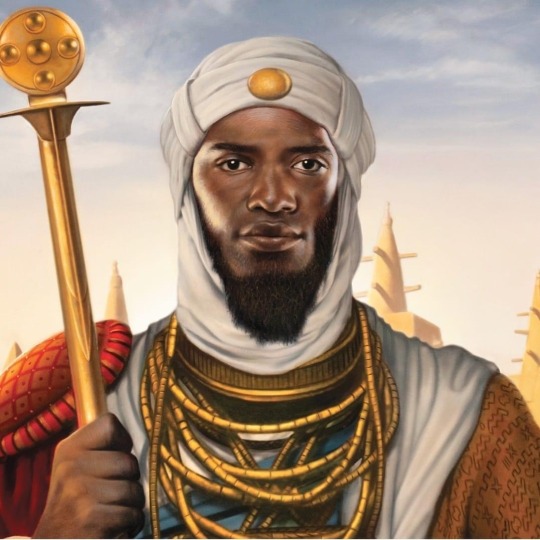
White people ask, why has there never been a powerful African nation like Rome, Persia, or the Aztecs?
Wait, seriously? “Never been a powerful African nation," says who exactly?
I’d presume you’ve never heard of some of these before:
ZULU KINGDOM. They crushed the British in their first battle and wrecked havoc on the Boers.The Zulu Kingdom, sometimes referred to as the Zulu Empire or the Kingdom of Zululand, was a monarchy in Southern Africa that extended along the coast of the Indian Ocean from the Tugela River in the south to Pongola River in the north.
MALIAN EMPIRE. Home to one of the richest Kings in human history. The Mali Empire was an empire in West Africa from c. 1226 to 1670. The empire was founded by Sundiata Keita and became renowned for the wealth of its rulers, especially Mansa Musa. The Manding languages were spoken in the empire.
KINGDOM OF AXUM. One of the centers of African civilization centuries before any European civilization. The Kingdom of Aksum, also known as the Kingdom of Axum or the Aksumite Empire, was a kingdom centered in Northeast Africa and South Arabia from Classical antiquity to the Middle Ages.
ANCIENT EGYPT. One of the centers of civilization. The civilization of ancient Egypt began in the Nile River valley of northeastern Africa. Ancient Egypt was one of the world's first civilizations. It is also one of the most famous civilizations in history.
KINGDOM OF KUSH. Which has more pyramids than Egypt by the way. The Kingdom of Kush was an ancient kingdom in Nubia, centered along the Nile Valley in what is now northern Sudan and southern Egypt. The region of Nubia was an early cradle of civilization, producing several complex societies that engaged in trade and industry.
THE KINGDOM OF DAHOMEY - This was a West African kingdom located within present-day Benin that existed from approximately 1600 until 1904.
THE KINGDOM OF BENIN - Also known as the Edo Kingdom, or the Benin Empire was a kingdom within what is now southern Nigeria. It has no historical relation to the modern republic of Benin, which was known as Dahomey from the 17th century until 1975.
THE GHANAIAN EMPIRE - Also known as Wagadou (Arabic: غانا) or Awkar, was a West African empire based in the modern-day southeast of Mauritania and western Mali that existed from c. 300 until c. 1100. The Empire was founded by the Soninke people, and was based in the capital city of Koumbi Saleh.
KONGO KINGDOM. Prior to the Portuguese arrival, Kongo was developed with a large commercial network. The kingdom melted copper and gold and traded it with products such as raffia cloth and pottery. The kingdom was a superpower and center of trade routes for ivory, copper, raffia cloth, and pottery.
ASHANTI EMPIRE. One of the most powerful and wealthiest states of the 18th-19th century.
The Asante Empire, today commonly called the Ashanti Empire, was an Akan state that lasted between 1701 to 1901, in what is now modern-day Ghana. It expanded from the Ashanti Region to include most of Ghana as well as parts of Ivory Coast and Togo.
The various African Kingdoms and empires were quite well known in Imperial Persia. The Sassanid & Nubian Kings in particular were quite familiar with each other. In fact, Persian traders and travelers extensively traveled the coastlines of modern-day East & North Africa bringing back various cuisines, spices, technologies, and in certain instances; slaves and laborers. Many Africans who came to Iran even became highly skilled soldiers and commanders in the Imperial Sassanid Army.
Moors is a term generally used by Europeans to describe the Muslim people of North Africa and the Iberian Peninsula during the Middle Ages. Between 711 C.E. and 1492 C.E. Muslim people of African descent controlled parts of Iberia which consist of modern-day Spain and Portugal, they ruled and civilized Europe.
Since the Moors ruled Spain for about 800 years, they had time to bring scientific techniques to Europe such as the astrolabe, a device to measure the position of the planets and stars. There was scientific progress in chemistry, mathematics, philosophy, astronomy, physics, and more.
Africans share strong historic ties with Turkey as the Ottoman Empire, its predecessor state, not only recruited tens of thousands of Africans into its army but also employed a large number of them in both the royal court and palace.
69 notes
·
View notes
Text
Cyrus the Great
Cyrus II of Persia (c. 600-530 BCE) was the founder of the first Persian Empire, the largest empire the world had ever seen.

[Cyrus in an 18th century tapestry]
Called the King of the Four Corners of the World, his empire (properly called the Achaemenid Empire or sometimes just 'The Empire'), he was known for his military successes, his respect for the people he conquered, and his highly effective system of administration and government.
Cyrus the Great succeeded his father as king of Ansan in 559, a vassal state to the Median Empire. Cyrus revolted against Media in a three-year civil war before capturing its ruler, his own grandfather, and began to expand his reach. By the end, he rules the entire Near East, most of Western Asia and Central Asia, and to the Mediterranean through Turkey.
Cyrus set up the system of satraps, a governorship with considerable autonomy. This allowed Cyrus to centralize power while still allowing people to keep their own ways. He forestalled rebellions by giving power to those he disposed of, allowing the to remain something like a king.

[The Cyrus Cylinder]
Cyrus the Great remains an influential figure for modern Iranians and his history is an important part of Iranian national identity. The Cyrus Cylinder (currently in the possession of the British Museum), an ancient clay cylinder describing Cyrus' entrance to Babylon, as the first attempt at fairly running a heterogenous society and is sometimes (though not without controversy) considered the first declaration of human rights in history. Cyrus is also the only non-Jewish figure to be called a messiah in the Tanach for his (historically-verified) Edict of Cyrus, encouraging diasporic Jews to relocate to Israel, which he controlled.
#long post#history#world history#asian history#persian history#iranian history#iran#persia#asia#cyrus#cyrus the great#cyrus of persia#political history#military history#moc#jewish history#empire#persian empire#Achaemenid Empire#GIVE THAT BACK
25 notes
·
View notes
Text
History of Syro Malabar Church
From St. Thomas Syro-Malabar Catholic Church in Bronx, NY.
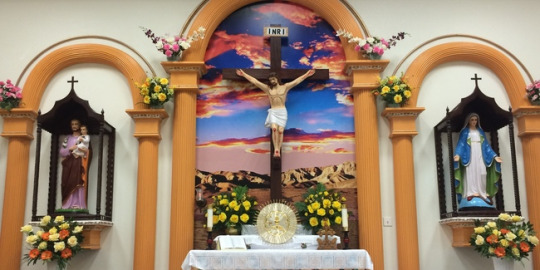
The Syro Malabar Church is one of the 21 Oriental Rites in the Universal Church.
The Apostles went around the world and preached the Gospel of Jesus Christ to different ethnic groups and cultures. Those people understood the Gospel Values with different cultural interpretations. They expressed their Faith through celebrations in different styles, languages, & cultures. Thus different Liturgies were formed and developed in the East which are listed in 5 Fundamental Families, namely: Alexandrian, Antiochean, Armenian, Chaldean, and Byzantine. And there are many different filial Churches in each Family.
And Latin Liturgy was developed in the West.
The Church made it’s distinction of East and West depending upon the 2 Capitals of the Great Roman Empire. All the Churches which came under the Capital City of Rome were called the Western Churches and all the Churches which came under the Capital City of Constantinople (Byzantium) were called the Eastern Churches.
Among the Eastern Churches, there are six Patriarchal Churches:
Coptic
Syrian
Maronite
Armenian
Chaldean
Melkite
There are two Major Archiepiscopal Churches:
Ukranian
Syro Malabar
The Syro Malabar Church was founded by St.Thomas, one of the 12 Apostles, who came to India in AD 52. He preached in different Kingdoms all around the Subcontinent and established seven and a half Ecclesial Communities in Malabar, today called Kerala. After 20 years of His Mission Work, He was martyred in Mylapore, near Madras by a fanatic Hindu priest on July 3rd in AD 72. The whole world celebrates the Martyrdom of St.Thomas on July 3rd and it is a day of obligation for the Syro Malabarians.
The early Christians of India were converted from the High Caste Hindus. They were ;called St.Thomas Christians and they developed into an Indigenous Individual Church until the 4th century.
Then the Persians came and dominated over the Indian Church and imposed their Chaldean Liturgy over us for about 1000 years. They were importing bishops from Persia from the Chaldean Church. They never ordained an Indian Bishop.
When the Portuguese arrived and colonized India in the beginning of the 16th century, they also imposed their Latin Liturgy and latinized us and restricted our freedom of development for 4oo years. They were also importing Bishops from abroad and they never ordained any Indian Bishop. They burned our Liturgical Texts and Vestments.
We were liberated by Pope Pius IX in 1896 by establishing a Syro Malabar Hierarchy. But this dynamic Church’s operations were limited to a very small territory between two rivers; namely: Pambayar and Bharatha Puzha. We were not allowed to do Mission Work in Our Own Rite. Those who wanted, had to adopt the Latin Rite. Only in 1952, the late Cardinal Tisserant, Prefect of the Oriental Congregation, who studied our history and knew the beauty of our Church, recommended to the Holy Father to remove those barriers .
Then Pope Pius XII extended our proper territory to Malabar, Mysore, Nilgiris and Trivandrum and established the Diocese of Tellicherry for the migrants from the South. And it was a mile stone in the progress of our Church.
On October 18th,1990, the Code of Canon Law for the Oriental Churches was promulgated in Rome.
After repeated memorandums by the Syro Malabar Bishops’ Conference, His Holiness Pope John Paul II raised our Church on May 20th, 1993 to the Status of a Major Archiepiscopal Church which is next only to a Patriarchal Church in rank and appointed Mar Antony Cardinal Padiyara, our first Major Archbishop, and Archbishop Mar Abraham Kattumana, it’s Pontifical Administrator.
The famous saying of Cardinal Tisserant is worth quoting: The Syro Malabar Church, established in India by St.Thomas the Apostle, is “Christian in Faith, Oriental in Worship, and Indian in Culture.”
This Particular and Individual Church plays a vital role in the missionary and evangelical activities of the Catholic Church around the world. Every year it admits over 2500 candidates for priesthood and religious life, 1500 of whom dedicate themselves to serve in other communities worldwide. Approximately 500 Syro Malabar priests and few hundred nuns serve in various Mission Centers throughout the USA and Canada.
Today, the Syro Malabar Catholic Church is a Sui Juris Particular Church, headed by His Eminence Mar Varkey Cardinal Vithayathil, the 2nd Major Archbishop. It has four Archdioceses, twenty suffragan dioceses and approximately 3000 parishes and semi- parishes. At present, there are fifty five bishops belonging to the Syro Malabar Rite: thirty two serving in Syro Malabar Dioceses and twenty three serving in other dioceses and apostolic offices. There are about 8000 priests in the ministerial priesthood. This makes a remarkable ratio of about one priest for every 500 faithful – an unprecedented number among other Churches. Moreover, 2500 seminarians are studying in various seminaries to join the priesthood. The Syro Malabar Church has approximately one female member in the various Institutes of Consecrated Life and Societies of Apostolic Order for every 100 members.
The name of our Church was ( Mar Thoma Nazranikal ) which means “Nazrenes of St.Thomas”. In the 19th century, the Oriental Congregation had renamed our Church as Syro Malabar Church. Our Bishops’ Synod has already passed a resolution to change the name of our Church from Syro Malabar Church to “The Church of St.Thomas Christians”.
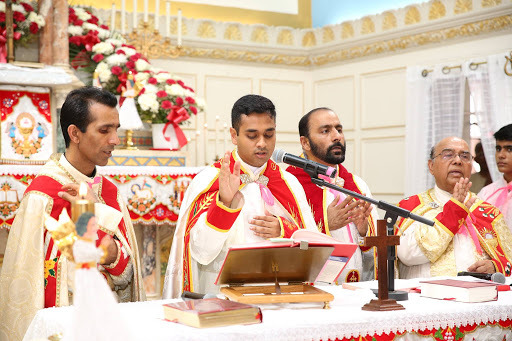
The main teachings of the Vatican II on Eastern Churches:
a) “All the members of the Eastern Rites should know and be convinced that they can and should always preserve the legitimate liturgical Rite and their established way of life, and that these may not be altered except to obtain for themselves an organic improvement. All these things ;must be observed by the members of the Eastern Rites themselves”. ( Vatican II, Orientalium Ecclesiarum: #6 ).
b) “Each and every Catholic (of Eastern Rites) must retain, each his own Rite wherever he is, and follow it to the best of his ability”. ( #4 )
c) “Those individual Churches of East or West are….of equal rank so that none of them is superior to others because of its Rite”. ( #3 )
d) “All members of the Eastern Churches are to aim always at a more perfect knowledge and practice of their Rites and if they have fallen away due to the circumstances of times and persons, they are to strive to return to their ancestral traditions.” ( #6 )
[Read More]
Prepared by Fr.Jos Kandathikudy
53 notes
·
View notes
Text
Phryne’s Journey -- Bandar Abbas, Iran
This year, we are following Phryne’s journey from Melbourne to London, inspired by the route Amy Johnson took in 1930! This month’s stop is…
Bandar Abbas, Persia

Bandar Abbas customs house, 1917
The first records of Bandar Abbas date to the reign of Darius the Great (522-486 BCE), and it was a trading hub for centuries. It has been known by many names throughout the years, but was renamed Bandar Abbas in 1622 CE, after Safavid ruler Shah Abbas defeated Portuguese troops. One almost wonders if there’s a connection to Sheikh Kahlil Abbas from a certain upcoming movie. While it had previously been under Portuguese and British control at various points, Persia was independent in Phryne’s time and governed by a monarch, the Shah of Iran.

Gombroon ware, 18th century
Now part of Iran, Bandar Abbas was (and remains) a port and convenient refuelling stop on the coast of Southern Iran. It has a hot desert climate, with summer temperatures reaching upwards of 49°C. The area exports items including dates, citrus, tobacco, and fish. Bandar Abbas was formerly famous for its export of Iranian pottery, which was known in the west as "goombroon ware".
Prompt: An Iranian chemist shop, 1930s

Here is how the challenge works: use either the location or the prompt as inspiration for a fic, piece of fanart, or meta about the Miss Fisher world and add it to the collection Phryne’s Journey on ao3 between now and the end of the month. You can also tag @missfisherchallenges and we’ll endeavour to reblog any posts we are tagged in. Everyone is welcome, whether you’re new to the fandom or old hat, writing every month or leaping in when inspiration strikes. We’re all here to have fun, after all!
#MFMM Phryne's Journey#MFMM Fandom Challenge#MFMM Year of Quotes#miss fisher's murder mysteries#July prompts
23 notes
·
View notes
Text
Kingdom of Zenith -An Introduction


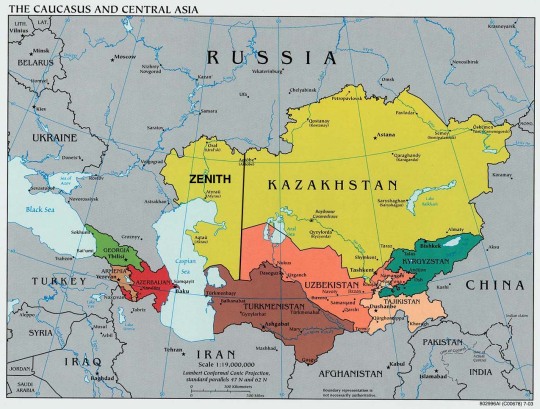
Zenith or Officially The Kingdom of Zenith was formed by partition of 1/4th of total area of Kazakhstan on the western front that has shore along Caspian Sea. It is landlocked country, the 36 largest country in the world lies in Central Asias and Europe. Zenith is projected to be the influential nation of Central Asia economically, generating 30% of the region's GDP, primarily through its oil and gas industry. It also has vast mineral resources. Zenith is officially a secular, unitary, constitutional monarchy with a diverse cultural heritage. Zenith shares borders with Russia, Uzbekistan, and Turkmenistan, and also adjoins a large part of the Caspian Sea. The terrain of Zenith includes flatlands, steppe, taiga, rock canyons, hills, deltas, snow-capped mountains, and deserts. Its population density is among the lowest, at less than 6 people per square kilometre (15 people per sq mi) Atyrau
The capital is Atyrau country's largest city. It is located at the mouth of the Ural River on the Caspian Sea, 351 kilometres (218 miles) east of the Russian city of Astrakhan. Atyrau's climate is semi-arid , just shy of being classified as arid, with hot summers and cold winters. Precipitation is low throughout the year. Snow is common, though light in winter. The lowest temperature on record is −37.9 °C (−36.2 °F), recorded in 1909, and the highest temperature is 42.7 °C (108.9 °F), recorded in 1984. It is much more continental than areas further west on the European continent, with summers characterised by temperatures averaging 33 °C (91 °F) and lack of precipitation, resembling continental hot-summer mediterranean climates, and subarctic winters with little snow but with chilling temperatures. These vast temperature swings are more comparable to Siberia and the North American plains. The biggest refinery in Zenith is located in Atyrau. Atyrau Refinery is operated Zenith Oil and Gas Company [ZOGC] and has a capacity of 16,600 m³/day (2012). A deep oil refining complex is under construction which is the final stage of complete reconstruction of Atyrau Oil Refinery. This project is designed to process 2.4 million tons/year of raw materials (oil and vacuum gas oil). The project will increase the depth of the oil processing at the refinery by 2020 to 85%. The volume of oil refining will reach 8 million tons per year. The territory of Zenith has historically been inhabited by nomadic groups and empires of Scythians who were Eurasian nomads, probably mostly using Eastern Iranian languages, who were mentioned by the literate peoples to their south as inhabiting large areas of the western and central Eurasian Steppe from about the 9th century BC up until the 4th century AD. The Scythians were among the earliest peoples to master mounted warfare. They kept herds of horses, cattle and sheep, lived in tent-covered wagons and fought with bows and arrows on horseback. They developed a rich culture characterised by opulent tombs, fine metalwork and a brilliant art style.the western Scythians were ruled by a wealthy class known as the Royal Scyths. The Scythians established and controlled the Silk Road, a vast trade network connecting Greece, Persia, India and China, perhaps contributing to the contemporary flourishing of those civilisations. Independence
The Russians began advancing into the Kazakh steppe in the 18th century, and by the mid-19th century, they nominally ruled all of Kazakhstan as part of the Russian Empire. Following the 1917 Russian Revolution, and subsequent civil war, the territory of Kazakhstan was reorganised several times. In 1936, it was made the Kazakh Soviet Socialist Republic, part of the Soviet Union.
Kazakhstan was the last of the Soviet republics to declare independence during the dissolution of the Soviet Union in 1991. Ten years later in 22nd December 2001 Zenith declared its Independence and Sovereignty from Kazakhstan following a huge civil war between Christians and Muslims in the Kazakhstan which led to Russian and NATO Intervention, both of which favoured creation of Zenith, a Christian Absolute Majority Nation. A UN resolution declaring Zenith an Independent nation was passed by a majority of 190 of the193 sovereign states subsequently Zenith was accepted as 194th sovereign state member of United Nations in 2003 and was again rectified by190 members. Zenith’s top Military Commander, Lieutenant General Alexander Orlov who openly supported Christians became the country's first King and Supreme Commander of Defence Forces . Emphasis was on converting the country's economy to a market economy while ensuring political reforms did not lag behind. By 2011, Zenith generated 30% of the GDP of Central Asia, primarily through its oil industry. King Alexander Orlov had plans on creating Nuclear Power Plants and has approached The International Atomic Energy Agency, UN Security Council and General Assembly. Zenith has signed on a Fissile Material Cut-off Treaty in Geneva, has been admitted to the Missile Technology Control Regime (MTCR), the Australia Group and the Wassenaar Arrangement. Zenith has also signed Non-Proliferation Treaty and has applied for membership to Nuclear Supplier Group, owing to its huge Uranium Deposits. In 2003, Zenith adopted a constitution that provided for the direct election of 30 of the 50 members of the Legislative Council. The constitution was overwhelmingly approved in a referendum, with almost 98% in favour
The King has the exclusive power to appoint and remove the Prime Minister and Cabinet Ministers who, together, constitute the Council of Ministers, which is the supreme executive authority in the country. The Council of Ministers also initiates legislation. Laws and decrees proposed by the Council of Ministers are referred to the Advisory Council for discussion after which they are submitted to the King for ratification. A Legislative Council has legislative authority to draft and approve laws, but the King has final say on all matters. Without The King’s Consent no Law can be passed. He can issues Royal Decree to issue laws directly.
The current King is His Majesty Adam Orlov, whose father His Royal Highness Alexander Orlov handed power to him on 1 May 2019. Making him youngest monarch.
Minerals Oil explorations have shown that the deposits on the Caspian shore are only larger deposit. It is said that 3.5 billion tonnes (3.4 billion long tons) of oil and 2.5 billion cubic metres (88 billion cubic feet) of gas could be found in that area. Zenith has an abundant supply of accessible mineral and fossil fuel resources. Development of petroleum, natural gas, and mineral extractions accounts for some 57% of the nation's industrial output (or approximately 20% of gross domestic product). According to some estimates Zenith has the tenth largest uranium, chromium, lead, and zinc reserves; the eighth largest manganese reserves; the fifth largest copper reserves; and ranks in the top ten for coal, iron, and gold. It is also an exporter of diamonds.
Wildlife
There are four nature reserves and three national parks in Zenith that provide safe haven for many rare and endangered plants and animals. Common plants are Astragalus, Gagea, Allium, Carex and Oxytropis; endangered plant species include native wild apple (Malus sieversii), wild grape (Vitis vinifera) and several wild tulip species (e.g. Tulipa greigii) and rare onion species Allium karataviense, also Iris willmottiana and Tulipa kaufmanniana.
Common mammals include the wolf, red fox, corsac fox, moose, argali (the largest species of sheep), Eurasian lynx, Pallas's cat, and snow leopards, several of which are protected.
Foreign Relations : Zenith is a member of the Commonwealth of Independent States, the Economic Cooperation Organisation and the Shanghai Cooperation Organisation. Zenith was elected a member of the UN Human Rights Council for the first time on 12 November 2018 Zenith s also a member of the United Nations, Organisation for Security and Cooperation in Europe, Euro-Atlantic Partnership Council, It is an active participant in the North Atlantic Treaty Organisation Partnership for Peace program. Zenith had applied for observer status at the Council of Europe Parliamentary Assembly. The official response of the Assembly was that because Kazakhstan is located in Europe, it could apply for full membership. It is under advance consideration. Since independence Zenith has pursued what is known as the "multivector foreign policy" (seeking equally good relations with its two large neighbours, Russia, as well as with the United States and the rest of the Western world. On 28 June 2019 Zenith was elected as a non-permanent member to serve on the UN Security Council for a two-year term
Zenith actively supports UN peacekeeping missions in Haiti, the Western Sahara, and Côte d’Ivoire . In March 2015, the Ministry of Defence chose 20 military men as observers for the UN peacekeeping missions.
Economy: Supported by rising oil output and prices, Zenith’s economy grew at an average of 8% per year until 2013, before suffering a slowdown in 2014 and 2015. Zenith was the first Independent nations to repay all of its debt to the International Monetary Fund, five years ahead of schedule. Buoyed by high world crude oil prices, GDP growth figures were between 8.9% and 13.5% from 2001 to 2013 . Zenith is a leading exporter of uranium. Railways provide 68% of all cargo and passenger traffic to over 57% of the country. Most cities are connected by railroad; high-speed trains Zenith achieved its goal of entering the top 50 most competitive countries in 2013, and has maintained its position in the 2014–2015 World Economic Forum Global Competitiveness Report that was published at the beginning of September 2014. Zenith is ahead of other states in the CIS in almost all of the report's pillars of competitiveness, including institutions, infrastructure, macroeconomic environment, higher education and training, goods market efficiency, labour market development, financial market development, technological readiness, market size, business sophistication and innovation, lagging behind only in the category of health and primary education. The Global Competitiveness Index gives a score from 1 to 7 in each of these pillars, and Zenith earned an overall score of 5. Kingdom of Zenith has declared English as Sate Language with Russian included in additional scheduled languages. According to the 2009 Census, 70% of the population is Christian 26% Jewish, 0.2% Buddhist, 0.1% other religions and 3% irreligious, while 0.5% chose not to answer According to its Constitution, Zenith is a secular state.
Religious freedoms are guaranteed by Article 30 Zenith's Constitution. Article 30 states: "Human rights and freedoms shall not be restricted in any way." Article 15 prohibits "discrimination on religious basis" and Article 20 ensures that everyone has the "right to determine and indicate or not to indicate his/her ethnic, party and religious affiliation." Education :
Education is universal and mandatory through to the secondary level and the adult literacy rate is 99.5% On average, these statistics are equal to both women and men Zenith
Education consists of three main phases: primary education (forms 1–4), basic general education (forms 5–9) and senior level education (forms 10–11 or 12) divided into continued general education and vocational education. Vocational Education usually lasts 3 or 4 years.[199] (Primary education is preceded by one year of pre-school education.) These levels can be followed in one institution or in different ones (e.g., primary school, then secondary school). Recently, several secondary schools, specialised schools, magnet schools, gymnasiums, lyceums and linguistic and technical gymnasiums have been founded. Secondary professional education is offered in special professional or technical schools, lyceums or colleges and vocational schools.[197]
At present, there are universities, academies and institutes, conservatories, higher schools and higher colleges. There are three main levels: basic higher education that provides the fundamentals of the chosen field of study and leads to the award of the Bachelor's degree; specialised higher education after which students are awarded the Specialist's Diploma; and scientific-pedagogical higher education which leads to the Master's Degree. Postgraduate education leads to the Master’s of Sciences and the Doctor of Sciences (Ph.D.). With the adoption of the Laws on Education and on Higher Education, a private sector has been established and several private institutions have been licensed.
Defence :
The Armed Forces of the Kingdom of Zenith is the unified armed forces of Zenith. It consists of the Ground Forces, Air and Air Defence Forces, Naval Forces, Special Forces and Royal Guards. The national defence policy aims are based on Constitution of Zenith They guarantee the preservation of the independence and sovereignty of the state and the integrity of its land area, territorial waters and airspace and its constitutional order. The armed forces of Kazakhstan act under the authority of the Ministry of Defence.
The Military Balance 2013 reported the armed forces' strength as; Army, 20,000, Navy, 3,000, Air Force, 12,000, and MoD, 4,000. It also reported 31,000 paramilitary personnel.
Today the Zenith Air Force has fast jet bases:[18]
200th Guards Air Base, with MiG-29,
202nd Air Base, with MiG-29,
204th Air Base, with MiG-27 and Su-27
210th Air Base, with MiG-31
211th Air Base, with Su-30 SM
Airforce Also has has 101 Light Air Wing with An 12, An 26, An 72. 102 Transport Wing with IL-76, C-130 J 104 Air Refuelling Wing with IL-78 301 Military Helicopters Wing, with Mil Mi-17, Mil Mi-24, Mil Mi-26 Naval Forces were established by presidential decree on 7 May 2003 in spite of being the largest landlocked country on earth. They operate on the Caspian Sea, based at Aktau. The Zenith Naval Force has a strength of 3,000 personnel and is equipped with fourteen inshore patrol craft. The naval aviation base in Aktau was opened eight years later, in 2011. The 612th Airbase in Aktau will provide the home for seven Su-27 fighter jets, seven MiG 29 Jets and few Mi-24s. GDP (PPP) 670 Billion USD GDP ( Nominal ) 420 Billion USD Time Zone UTC +5 Total Area is 681,225 Sq KM or 263025 Sq Miles
3 notes
·
View notes
Text

This day in hockey history, March 3rd 1875, the first recorded ice hockey game was played, with McGill University going against the Victoria skating club, at the Victoria Rink in Montreal. The two teams played with nine men on a side, and used a flat wooden disk as a puck. With the rules now recorded and standardized, hockey as we know it was "born."
After weeks of training at the Victoria Skating Rink with his friends, Montreal resident James Creighton advertised in the March 3 edition of the Montreal Gazette that “A game of hockey will be played in the Victoria Skating Rink this evening between two nines chosen from among the members.” Prior to the move indoors, ice hockey was a casual outdoor game, with no set dimensions for the ice and no rules regarding the number of players per side. The Victoria Skating Rink was snug, so Creighton limited the teams to nine players each.
Hockey, traditionally played on grass with a stick and a ball, has its roots in ancient Greece, Egypt and Persia. In this form, the game spread north to Europe and then west to the Americas, and is still popular in the Southern Hemisphere as well as in North America, where it is called field hockey. North America’s indigenous people were playing games with a stick and ball long before the French and English crossed the Atlantic. Cherokee, Ojibwe and Mohawk tribes all had different names for what the French branded “lacrosse,” as did the Iroquois native to Quebec. Meanwhile, ice skating was popularized by skating on sharpened animal shinbones in Europe in the 17th and 18th centuries, and games played on ice included a Dutch version of golf and an on-ice version of hurling, an Irish stick-and-ball game.
Ice hockey was initially thought too dangerous a game to play, as the ball was difficult to control on the ice. For the 1875 Montreal game, the ball was replaced with a wooden disc, now known as a puck. The disc was less likely to fly off the ice, and was less dangerous to both players and spectators. Creighton also instituted an early off-sides rule, mandating that there be no forward passing ahead of the player with the puck. The Montreal Gazette reported the next day that the first ice hockey game at Victoria Skating Rink attracted 40 spectators. Ice hockey then caught fire in Montreal, and in 1877 Creighton published rules to the game, known as Montreal Rules. Canada’s now legendary national passion for ice hockey was ignited, and the new sport began to spread across the country.
Years later, in 1994, bill C-212, making ice hockey the official winter sport of Canada, was made law by Canada’s parliament. Lacrosse—which had been Canada’s national sport since 1859—remained the country’s official summer game.
Visit vintagehockeyjerseys.net for more vintage hockey
9 notes
·
View notes
Text
Crumbling Competition
By Emma Babashak, Columbia University, Class of 2024
August 7, 2022

The first cookies, invented in 7th century Persia, were made so that bakers could test an oven’s temperature. Eventually, through war and exploration, cookies were introduced to Europe. By the 14th century, recipes to bake cookies were well-known in European cities and households.[1] Sprinkles, now found on some types of cookies, also have historical roots. Sprinkles were invented by French bakers in the 18th century and originally given the name nonpareils, which means “without equal” in English.[2] Moreover, the Industrial Revolution created technological improvements that resulted in cookies and sprinkles being produced commercially in the 20th and 21st centuries.
Thus, Crumbl Cookies (founded in 2017) did not successfully run a business by selling a novel product that had never been invented. Instead, after opening its first store in Logan, Utah, the company built its business by marketing on social media and offering a rotating weekly menu of cookie flavors for takeout or delivery. Since opening its doors in 2017, Crumbl now has over 300 bakeries in 36 states nationwide, making it the fastest-growing cookie company in the country.[3]
Today, Crumbl is suing two of its competitors – Dirty Dough and Crave Cookies – for trademark infringement. Lawsuits filed in the U.S. District Court on May 10, 2022, illustrate that Crumbl is seeking triple damages from these two companies in an amount deemed fair by the court. An amended lawsuit against Crave Cookies was filed June 29, 2022. These lawsuits allege that both companies copied Crumbl's weekly rotating menu model as well as its products and packaging.
In the lawsuits, Crumbl includes header sections with close-up pictures of cookies, a cookie logo with a bite taken out of it, long boxes that perfectly fit cookies side by side, and similar cookie recipes and presentation (such as sugar cookies with fruity cereal for decoration) as examples of copying.
In addition, the suits filed against Crave Cookies claim that Crave co-founder Trent English toured a Crumbl location and applied to be a franchise owner just before starting his own business in 2019. "The fact that Crave was founded by a former Crumbl applicant with knowledge of Crumbl's business and brand identity shows that Crave was clearly aware of Crumbl and the Crumbl trade dress," the lawsuit states.[4]
But are Crave Cookies and Dirty Dough in violation of trademark infringement, or are these companies just competitors offering similar products?
Competitors or Copycats?
Crave Cookies currently has four stores in operation in Utah. Its website states, “After experimenting with hundreds of different recipes to find the perfect chocolate chip cookie, we created what we believe to be the best cookies you will ever taste”.[5]
Dirty Dough currently has three stores up and running in Utah, and it plans to open dozens of stores around the country. According to its website, “Dirty Dough cookies are engineered from the inside out, with every cookie featuring some combination of layers, mix-ins, or filling within the dough. The unique flavor profiles and trademark gooey goodness of our cookies set us apart from other cookie-cutter brands (see what we did there?)”.[5]
Like Crumbl Cookies, both Crave Cookies and Dirty Dough sell decorated cookies with a rotating menu. However, the owners of both companies deny directly copying Crumbl. For instance, Dirty Dough owner Bennett Maxwell recently placed 12 digital advertising billboards in response to the lawsuit. One states, “Our cookies don't crumble with competition" and another said, "We don't just file lawsuits- we just have better cookies." In response to Crumbl using pictures to illustrate the similarities between its cookies and Dirty Dough’s and Crave Cookies’ cookies, Maxwell stated, "They're showing our picture of cookies and sprinkles next to theirs like they had the first cookie with sprinkles”. Similarly, Crave Cookies co-founder Trent English has stated, “Our reaction is kind of confusion because we don't see any similarities. This is their way to stifle competition”.[7]
Even without legal interference, the imitation of a competitor rarely results in a positive outcome. In her book, Understanding Michael Porter: the Essential Guide to Competition and Strategy, Joan Magretta states, “In what classical economic theory calls ‘competition,’ evenly matched rivals selling equivalent products go head to head, driving prices (and profits) down… But Porter offers a more nuanced and complex view of what actually happens when companies compete to be the best. Customers may benefit from lower prices as rivals imitate and match each other’s offerings, but they may also be forced to sacrifice choice. When an industry converges around a standard offering, the ‘average’ customer many fare well… The needs of other customers may be undeserved. Think about the last flight you took. It probably met the basic need of getting you where you needed to be. But was it a pleasant experience? Are you eager to fly again? When choice is limited, value is often destroyed”.[8] According to Porter, companies should not compete to be the “best’ in an undifferentiated industry, but instead compete to be “unique”. In addition, if customers only have access to undifferentiated products, then they are also detrimentally affected.[8]
Thus, through a lawsuit, Crumbl Cookies is trying to prevent competition based on price in an undifferentiated cookie industry. If Crave Cookies and Dirty Dough are not differentiated from Crumbl, competition based off of which store offers the lowest priced cookie will occur. This will result in lower profits for all competitors. Even without the threat of a lawsuit, Crave Cookies and Dirty Dough should try to further differentiate their business models to attract new types of customers that are not part of Crumbl’s market. By offering unique products, services, or marketing, Crave Cookies and Dirty Dough can avoid crumbling under the influence of its more established competitor.
______________________________________________________________
Emma Babashak is currently a rising junior attending Columbia University. She is majoring in Operations Research - Engineering Management Systems and minoring in both Economics and Psychology.
______________________________________________________________
[1] https://dodocookiedough.com/a-brief-history-of-the-cookie/
[2] https://brokebankvegan.com/galletas-de-grageas/
[3] https://crumblcookies.com/history
[4] https://www.ksl.com/article/50438835/utah-gourmet-cookie-maker-crumbl-files-lawsuits-against-2-rival-companies
[5] https://www.cravecookies.com
[6] https://dirtydoughcookies.com/about-dirty-dough/
[7] https://www.axios.com/local/salt-lake-city/2022/07/27/utah-cookie-wars-unravel-online-crumbl-crave-dirty-dough
[8] Joan Magretta. Understanding Michael Porter: the Essential Guide to Competition and Strategy (Boston: Harvard Business Review Press, 2012), 28-29.
0 notes
Text
Saints&Reading: Thu., July 2, 2020
Celebrating Saints of June 19, in the Old Calendar
Holy Apostle Jude , the Brother of the Lord (80)

The Holy Apostle Jude, one of the twelve apostles of Christ, is descended from King David and Solomon, and was the son of Righteous Joseph the Betrothed (Sunday after the Nativity of the Lord) by his first wife.
The Holy Apostle John the Theologian writes in his Gospel, “... neither did his brethren believe in Him” (John. 7:5). Saint Theophylact, Archbishop of Bulgaria, explains this passage. He says that at the beginning of the Lord Jesus Christ’s earthly ministry, Joseph’s sons, Jude among them, did not believe in His divine nature. Tradition says that when Saint Joseph returned from Egypt, he began to divide his possessions among his sons. He wanted to allot a share to Christ the Savior, born miraculously and incorruptibly from the All-Pure Virgin Mary. The brothers were opposed to this because Jesus was born of another mother. Only James, later called “The Brother of God,” offered to share his portion with Him.
Jude came to believe in Christ the Savior as the awaited Messiah, and he followed Him and was chosen as one of the twelve Apostles. Mindful of his sin, the Apostle Jude considered himself unworthy to be called the Lord’s brother, and in his Epistle he calls himself merely the brother of James.
The Holy Apostle Jude also had other names: the Evangelist Matthew terms him “Lebbaeus, whose surname was Thaddeus” (Mt. 10:3). The Holy Evangelist Mark also calls him Thaddeus (Mark 3:18), and in the Acts of the Holy Apostles he is called Barsabas (Acts 15: 22). This was customary at that time.
After the Ascension of the Lord Jesus Christ, Saint Jude traveled about preaching the Gospel. He propagated the faith in Christ at first in Judea, Galilee, Samaria and Idumaia, and later in the lands of Arabia, Syria and Mesopotamia. Finally, he went to the city of Edessa. Here he finished the work that was not completed by his predecessor, Saint Thaddeus, Apostle of the Seventy (August 21). There is a tradition that Saint Jude went to Persia, where he wrote his catholic Epistle in Greek. In the Epistle much profound truth was expressed in a few words.
Saint Jude’s Epistle speaks about the Holy Trinity, about the Incarnation of the Lord Jesus Christ, about the good and bad angels, and about the dread Last Judgment. The Apostle urges believers to guard themselves against fleshly impurity, to be diligent in prayer, faith and love, to convert the lost to the path of salvation, and to guard themselves from the teachings of heretics. He also says that it is not enough just to be converted to Christianity, but faith must be demonstrated by good works. He cites the rebellious angels and men punished by God (verse 6) to support this.
The Holy Apostle Jude died as a martyr around the year 80 near Mt. Ararat in Armenia, where he was crucified and pierced by arrows.
Source OCA ( Saints of the day)
St john of Shangai and San Francisco

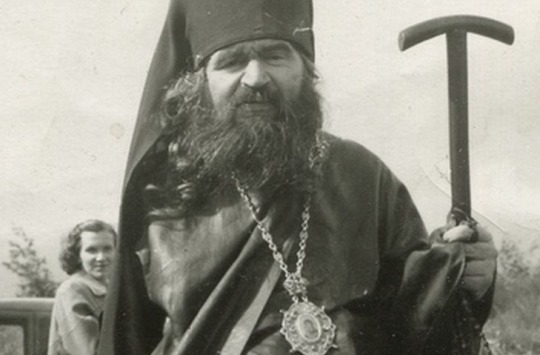
Saint John was born on the 4th of June 1896 on the country estate of his parents, descendants of nobility, Boris Ivanovich and Glaphira Mikhailovna Maximovitch in the little town of Adamovka in the Province of Kharkov. At Baptism he received his name in honour of Saint Michael the Archangel. His paternal ancestors were of Serbian extraction. One of his ancestors, Saint John, Metropolitan of Tobolsk, was an ascetic of holy life, a missionary, and a spiritual writer. Saint John of Tobolsk lived in the first half of the 18th century and was glorified in 1916. His glorification was the last celebrated during the reign of the Tsar Martyr Nicholas.
Saint John was an obedient child; his sister recalls that it was very easy for his parents to raise him. Ruminating about his future during his youth, he could not make a definite decision as to a career, being unsure as to whether he should dedicate himself to military or civil service He only knew that his future life would be guided by an insuperable desire to stand up for the Truth, which was nurtured in him by his parents. He was inspired by the examples of those people who live their lives for the Truth.
He commenced his education at the Poltava Military Academy which, Vladyka himself would later say, “was dedicated to one of the glorious pages of the history of Russia.” He was an exemplary student, but he disliked two subjects; gymnastics and dancing. He was well liked at the academy, but nevertheless felt he should choose a different path. This idea was especially furthered by contact with the well known religious instructor at the academy, Archpriest Sergei Chetverikov, author of books about Saint Paisius Velichkovsky and the Holy Optina Elders, and with the rector of the local seminary, Archimandrite Varlaam. The day of Michael Maximovitch’s completion of the military academy coincided with that of Archbishop Anthony’s (Khrapovitsky) investiture to the catherdra of the See of Kharkov. This renowned hierarch and theologian was the main advocate of the restoration of the patriarchate in Russia, subsequently the Metropolitan of Kiev and Galich, and finally the First Hierarch of the Russian Orthodox Church Abroad. Throughout his life this Archpastor inspired the church-oriented academic youth in all matters spiritual thanks to his principal attribute – his sincere love for them. Having heard about young Michael Maximovitch, of whom many spoke in church circles, Archbishop Anthony desired to meet him. It was in Kharkov that Archbishop Anthony became Saint John’s spiritual guide. This relationship continued throughout Archbishop Anthony’s whole life.
In Kharkov Michael entered Law School, which he completed in 1918, and served for a while in the Kharkov court during the days when the Ukraine was ruled by the Cossack leader, (Hetman) Skoropatsky. But the heart of the future hierarch was far from this world. When not studying, he spent all of his free time at the university reading spiritual literature, especially favouring the lives of saints. “While studying the worldly sciences,” said the Saint during his election to the episcopacy, “I delved all the more into the study of the Science of sciences, into the study of the spiritual life.” Visiting the monastery in which Archbishop Anthony lived, Michael had the opportunity to pray at the tomb of an ascetic of the first half of the 18th century, Archbishop Leletius Leontievish, a deeply revered but not yet glorified righteous one. The soul of the young saint was pierced by a thirst to obtain the true goal and path of life in Christ...Keep reading Australian and New Zealand, ROCOR Diocese
Jude 1:1-10 NKJV
Greeting to the Called
1 Jude, a bondservant of Jesus Christ, and brother of James,
To those who are called, [a]sanctified by God the Father, and preserved in Jesus Christ:
2 Mercy, peace, and love be multiplied to you.
Contend for the Faith
3 Beloved, while I was very diligent to write to you concerning our common salvation, I found it necessary to write to you exhorting you to contend earnestly for the faith which was once for all delivered to the saints. 4 For certain men have crept in unnoticed, who long ago were marked out for this condemnation, ungodly men, who turn the grace of our God into lewdness and deny the only Lord [b]God and our Lord Jesus Christ.
Old and New Apostates
5 But I want to remind you, though you once knew this, that the Lord, having saved the people out of the land of Egypt, afterward destroyed those who did not believe. 6 And the angels who did not keep their [c]proper domain, but left their own abode, He has reserved in everlasting chains under darkness for the judgment of the great day; 7 as Sodom and Gomorrah, and the cities around them in a similar manner to these, having given themselves over to sexual immorality and gone after strange flesh, are set forth as an example, suffering the [d]vengeance of eternal fire.
8 Likewise also these dreamers defile the flesh, reject authority, and speak evil of [e]dignitaries. 9 Yet Michael the archangel, in [f]contending with the devil, when he disputed about the body of Moses, dared not bring against him a reviling accusation, but said, “The Lord rebuke you!” 10 But these speak evil of whatever they do not know; and whatever they know naturally, like brute beasts, in these things they corrupt themselves.
Footnotes:
Jude 1:1 NU beloved
Jude 1:4 NU omits God
Jude 1:6 own
Jude 1:7 punishment
Jude 1:8 glorious ones, lit. glories
Jude 1:9 arguing
John 14:21-24 NKJV
1 He who has My commandments and keeps them, it is he who loves Me. And he who loves Me will be loved by My Father, and I will love him and [a]manifest Myself to him.”
22 Judas (not Iscariot) said to Him, “Lord, how is it that You will manifest Yourself to us, and not to the world?”
23 Jesus answered and said to him, “If anyone loves Me, he will keep My word; and My Father will love him, and We will come to him and make Our home with him. 24 He who does not love Me does not keep My words; and the word which you hear is not Mine but the Father’s who sent Me.
Footnotes:
John 14:21 reveal New King James Version (NKJV) Scripture taken from the New King James Version®. Copyright © 1982 by Thomas Nelson. All rights reserved.
Source Biblegateway
#ortohodoxy#orthodoxchristian#religions orthodoxy#firstchristian#ancient faith#spirituality#bible#gospel
3 notes
·
View notes
Photo

Iran,[a] also called Persia,and officially the Islamic Republic of Iran,[b] is a country in Western Asia. With 82 million inhabitants,Iran is the world's 18th most populous country. Its territory spans 1,648,195 km2 (636,372 sq mi), making it the second largest country in the Middle East and the 17th largest in the world. Iran is bordered to the northwest by Armenia and the Republic of Azerbaijan,[c] to the north by the Caspian Sea, to the northeast by Turkmenistan, to the east by Afghanistan and Pakistan, to the south by the Persian Gulf and the Gulf of Oman, and to the west by Turkey and Iraq. Its central location in Eurasia and Western Asia, and its proximity to the Strait of Hormuz, give it geostrategic importance.[18] Tehran is the political and economic center of Iran, and the largest and most populous city in Western Asia with more than 8.8 million residents in the city and 15 million in the larger metropolitan area. Iran is home to one of the world's oldest civilizations, beginning with the formation of the Elamite kingdoms in the fourth millennium BCE. It was first unified by the Iranian Medes in the seventh century BCE, and reached its territorial height in the sixth century BCE under Cyrus the Great, whose Achaemenid Empire stretched from Eastern Europe to the Indus Valley, one of the largest empires in history. The empire fell to Alexander the Great in the fourth century BCE and was divided into several Hellenistic states. An Iranian rebellion established the Parthian Empire in the third century BCE, which was succeeded in the third century CE by the Sasanian Empire, a leading world power for the next four centuries. . . . . . #iran #iranian #irani #iran_tourism #iran🇮🇷 #iran_nature #irantourist #irantravel #irannature #iran_aks_mobile #iran_insta_pic #iranian_photographers #iran_desert #iran_deserts #iran_desert_tour #iran_tour #iran_tourism_official #iran_travel_tour #desert_mesr #travel_in_iran #travel #travelphotography #travelling #traveling #traveler #travelers #legendoflostland #legend_of_lost_land (at Iran) https://www.instagram.com/p/B4RZHLQhmk3/?igshid=1k8wequnau8tm
#iran#iranian#irani#iran_tourism#iran🇮🇷#iran_nature#irantourist#irantravel#irannature#iran_aks_mobile#iran_insta_pic#iranian_photographers#iran_desert#iran_deserts#iran_desert_tour#iran_tour#iran_tourism_official#iran_travel_tour#desert_mesr#travel_in_iran#travel#travelphotography#travelling#traveling#traveler#travelers#legendoflostland#legend_of_lost_land
0 notes
Photo

Iran,[a] also called Persia,and officially the Islamic Republic of Iran,[b] is a country in Western Asia. With 82 million inhabitants,Iran is the world's 18th most populous country. Its territory spans 1,648,195 km2 (636,372 sq mi), making it the second largest country in the Middle East and the 17th largest in the world. Iran is bordered to the northwest by Armenia and the Republic of Azerbaijan,[c] to the north by the Caspian Sea, to the northeast by Turkmenistan, to the east by Afghanistan and Pakistan, to the south by the Persian Gulf and the Gulf of Oman, and to the west by Turkey and Iraq. Its central location in Eurasia and Western Asia, and its proximity to the Strait of Hormuz, give it geostrategic importance.[18] Tehran is the political and economic center of Iran, and the largest and most populous city in Western Asia with more than 8.8 million residents in the city and 15 million in the larger metropolitan area. Iran is home to one of the world's oldest civilizations, beginning with the formation of the Elamite kingdoms in the fourth millennium BCE. It was first unified by the Iranian Medes in the seventh century BCE, and reached its territorial height in the sixth century BCE under Cyrus the Great, whose Achaemenid Empire stretched from Eastern Europe to the Indus Valley, one of the largest empires in history. The empire fell to Alexander the Great in the fourth century BCE and was divided into several Hellenistic states. An Iranian rebellion established the Parthian Empire in the third century BCE, which was succeeded in the third century CE by the Sasanian Empire, a leading world power for the next four centuries. . . . . . #iran #iranian #irani #iran_tourism #iran🇮🇷 #iran_nature #irantourist #irantravel #irannature #iran_aks_mobile #iran_insta_pic #iranian_photographers #iran_desert #iran_deserts #iran_desert_tour #iran_tour #iran_tourism_official #iran_travel_tour #desert_mesr #travel_in_iran #travel #travelphotography #travelling #traveling #traveler #travelers #legendoflostland #legend_of_lost_land (at Iran) https://www.instagram.com/p/B4RY1TQjJS2/?igshid=kohidvq98i1z
#iran#iranian#irani#iran_tourism#iran🇮🇷#iran_nature#irantourist#irantravel#irannature#iran_aks_mobile#iran_insta_pic#iranian_photographers#iran_desert#iran_deserts#iran_desert_tour#iran_tour#iran_tourism_official#iran_travel_tour#desert_mesr#travel_in_iran#travel#travelphotography#travelling#traveling#traveler#travelers#legendoflostland#legend_of_lost_land
0 notes
Text
Orientalism in the Alfred Rubens Collection
by Dr Kathrin Pieren, Collections Manager and Curator
The museum’s Rubens Collection of 1,600 drawings, prints, etchings, and lithographs from the 17th to the 20th century encompasses scenes from Jewish life and portrays Jewish personalities, mostly from Britain. Yet, it also includes ethnographic prints of Jews from Northern Africa, Turkey and the Middle East. These depictions of ethnographic ‘types’, made to bring the customs and costumes of far-away lands to a Western audience, reveal aspects of the West’s continuing fascination with the ‘Orient’.

Left: Drawing of a Turkish Jew, c. 1830 (AR 2388); Right: Jeune Juive, wood engraving by Verdeil from an original by Pauquet, 1841-1850 (AR 45)
For centuries, people in Europe have been fascinated by the area around the Eastern and Southern seaboard of the Mediterranean, the ‘Orient’ or ‘Levant’. This was largely due to the origins of Christianity in Judaism in the Middle East.
During the Middle Ages and in Early Modernity the Orient was seen both as a political and cultural threat to the Christian West and as an attraction, since Muslims and Jews brought customs, art, poetry, philosophy, and sciences to the West.
In the 17th century, with the increase in trade with the Ottoman Empire travelling became easier, painters and authors visited Turkey and Persia and reported about these areas. The Ottoman Empire held a particular fascination, and a ‘craze’ for all things Turkish (turqueries) matched the ‘craze’ for all things Chinese (chinoiseries). Artists and diplomats reported about their travels, trying to capture the habits and dresses of that multicultural empire which included many Jewish people.
The earliest representations of a Jewish woman and man from the Ottoman Empire in the Rubens Collection are reproductions from the book by Byzantian Greek scholar Laonicos Chalcocondyles, Histoire générale des Turcs (General History of the Turks) from 1662.
In fact, they are even older as Chalcocondyles copied them from the book by Nicolò de Nicolai, Le Navigationi et Viaggi nella Turchia (The Navigations and Travels in Turkey) from 1568. The author was also upfront about the illustrations being based on antique medals, descriptions of travellers to the area and good writers, so reservations regarding the authenticity of the costumes and descriptions are therefore clearly due.

Femme juive d’Adrinople (modern day Edirne), engaging, 1620 (AR 2360.1)
In the accompanying text Chalcocondyles emphasised the diversity of ethnic groups in both Constantinople and Adrianopolis, distinct by their respective dress. According to his description Jewish women wore a headscarf that also covered the neck and they carried a jewel on a ribbon and, according to their means, a gold chain, but no other jewellery or rings.

Marchand juif engraving, 1620 (AR 2359.1)
The Jewish merchant in the same book is described as wearing a long garment similar to the Greeks and Levantins but a distinctive yellow turban. He would have carried sheets with him to sell on the street.
While his descriptions of the costumes are rather matter of fact, the author betrayed his negative prejudices against the Jews when referring to them as ‘a miserable nation’ of outcasts doomed to wonder the earth. In the context of his publication this negative judgment does not come as a surprise.
In his dedication to the Duke of Richelieu, Chalcocondyles presented the content of the book as being a history of the action and customs of the Turks whose ‘impiety’ and ‘malice’ he contrasted with the duke’s ‘integrity’ and ‘zeal for the real true and only religion’. His exclusive view of Christianity clearly coloured his view of Islam as well as Judaism.
Nearly a century later, in 1714, Charles de Ferriol, French ambassador in Constantinople, published a book with engravings made on the basis of paintings by Jean-Baptiste Van Mour and others entitled Recueil de cent estampes représentants différentes nations du Levant (Collection of one hundred prints representing the different nations of the Levant).It was long used as a principal source of information on the Ottoman Empire not only by scholars but also by artists and writers who were inspired by it and plagiarised it in many parts of Western Europe.
Interestingly, the Rubens Collection includes several versions of the same print with subtle changes. These variants illustrate how long these prints remained in circulation and how they must have been altered to accommodate changes in fashion.

Femme juive en habit de cérémonie, engraving by G Scotin, c.1714 (AR 2372)
The first image shows a woman dressed in a long buttoned patterned coat, worn over a skirt and wrapped in an overcoat or stole. The second print, dating from the end of the 18th century, was reproduced in a book by printer Theodorum Vietro, Raccolta di 100 Stampe, che rappresentano Figure, ed Abiti di varie Nazioni… (Collection of 100 Prints Representing Figures, and Dresses of Various Nations…) from 1790.

Demoiselle juive en habit de noces, engraving from an original by Franciscus Smith, 1783-1791 (AR 2377)
In the second picture the coat is made of a stripy fabric. A curtain in a matching colour now covers the window on the left and the view from the window on the right has been omitted, making the space more intimate; the design of the rug has shifted from geometric to floral. Moreover, the woman’s face has changed, her gaze becoming more direct and less contemplative. This might be due to the fact that the ceremonial dress in the earlier print has now more specifically become a wedding dress!
In the 19th century, an even greater number of artists represented the ‘Orient’ and the focus shifted to other countries, partly due to power shifts. As the Ottoman Empire declined, Arabs became the stereotypical ‘oriental’. Just like earlier artists had travelled to Italy on their Grand Tour, the artists of the day went to the Middle East and Northern Africa. However, most of them were still happy to create the Orient from the comfort of their European studios, collecting artefacts, prints and basing themselves on travel accounts.
Eugène Delacroix (1798-1863) was one of those artists who actually got to spend time abroad. As with many other artists his fascination with the Orient was rooted in literature, including the works of Dante Alighieri, Torquato Tasso and Lord Byron. He finally travelled to Morocco in 1832 upon invitation by King Louis-Philippe who sent a delegation to the Sultan in the face of an insurgency in the Oran region (Algeria).
From the beginning, Delacroix was fascinated and he considered Tangiers ‘a place conceived for painters… there is real beauty here, not the beauty vaunted in fashionable works’. He spent six months in Northern Africa. During that time he filled seven large sketchbooks and created an album of 18 watercolours. A month after his arrival he had the chance to attend a Jewish wedding, on which he based his Jewish Wedding in Morocco (1841) now in the Louvre.

Juive d’Alger, etching by Eugene Delacroix, 1833 (AR 40)
The Musée Delacroix the above print represents a Jewish bride in the company of her servant, waiting after being dressed up. While he was working from direct encounters with his subjects, many other artists of the time relied on imagination and hearsay when depicting another private female space, the harem.
One of the most popular subjects among orientalist painters at the time, it was represented as abundant with exotic beauty and erotic undercurrents, telling us more about Western ideas of the Orient than actual life in those countries.
In the 20th century, Jews from the Middle East held a specific fascination for some Jewish people in Western Europe. At the very beginning of the century, the German Jewish cultural magazine Ost und West published illustrated articles on Jews in Central Asia and the Yemen and it also contained images of Jews from Northern Africa and Palestine.
The concept that these people had preserved some authentic characteristics of the ancient Hebrews had implications for the Zionist movement. At the Bezalel School of Art, founded in Jerusalem in 1906 to develop a Jewish style in art, the drawing of Jewish ‘types’ was a regular practice.

Moroccan Jew by E M Lilien, 1909 (AR 1997)
A co-founder of the school, Austrian illustrator and printmaker Ephraim Moses Lilien (1874-1925) travelled to Palestine several times between 1906 and 1918. This portrait is one of several Northern African Jewish portraits in the Rubens Collection he drew, most likely during one of his trips. Different from the earlier representations described above, his portraits are less concerned with dress and focus on differences in facial features and expression instead.
5 notes
·
View notes